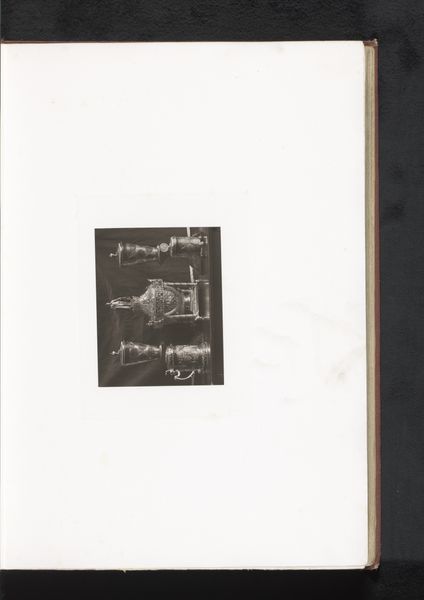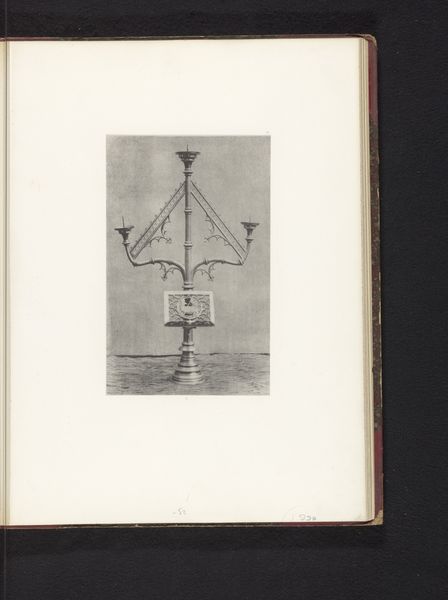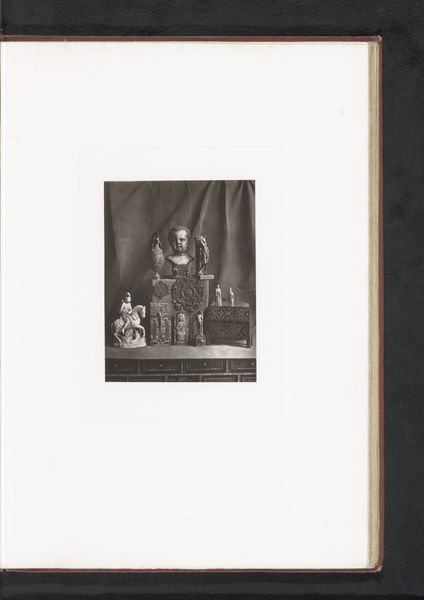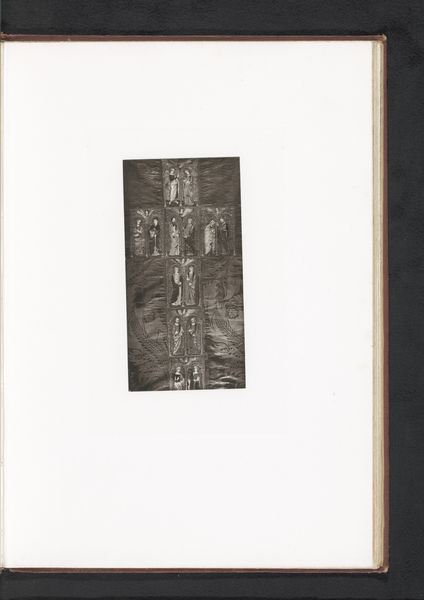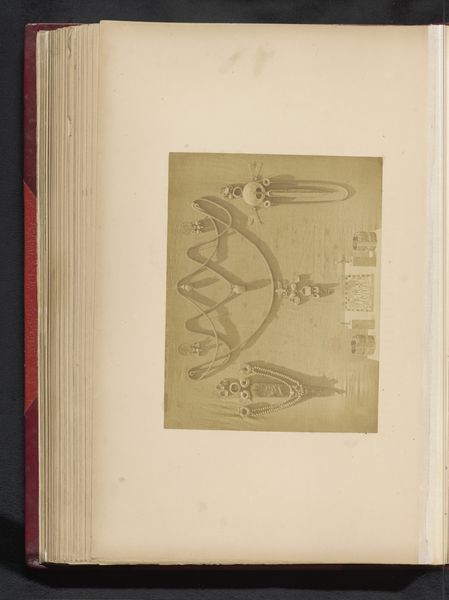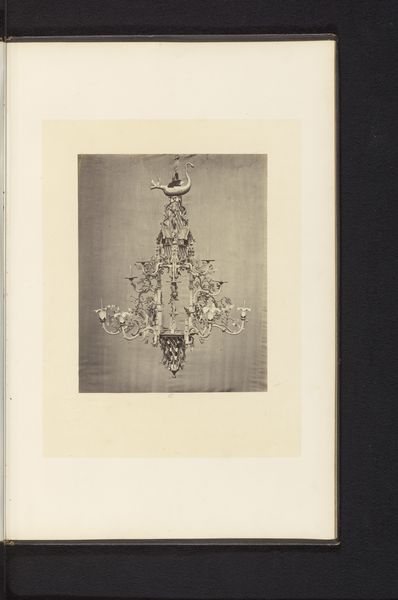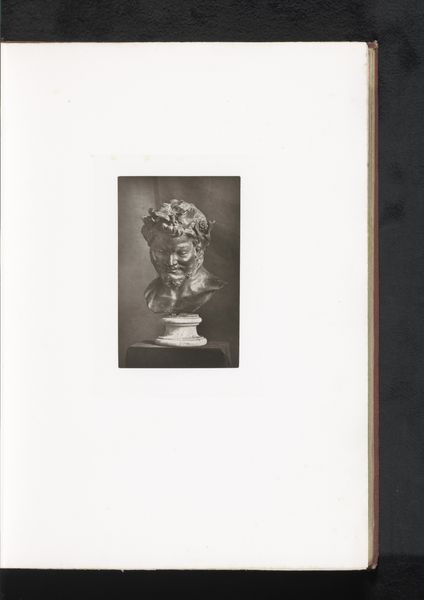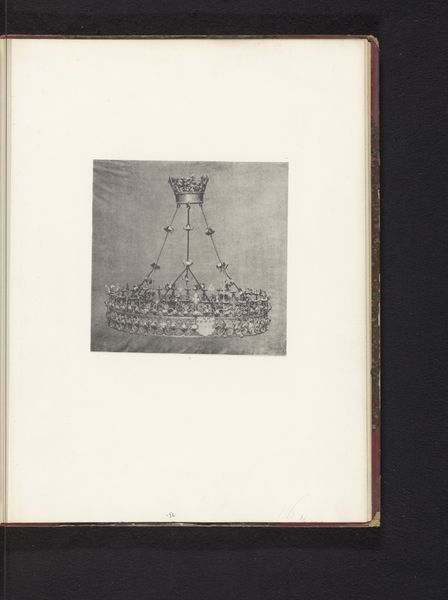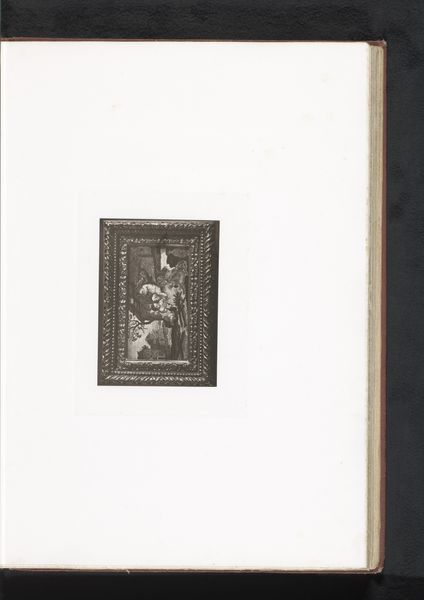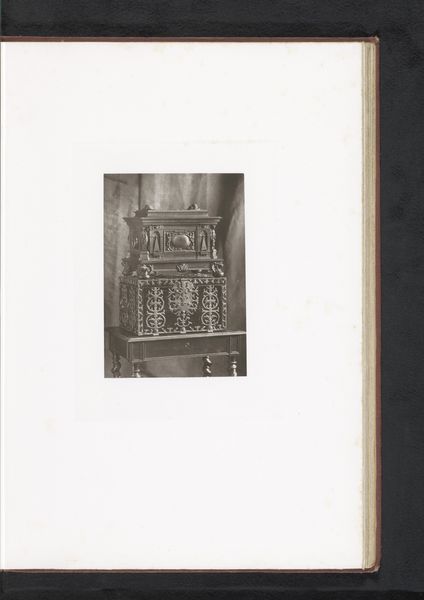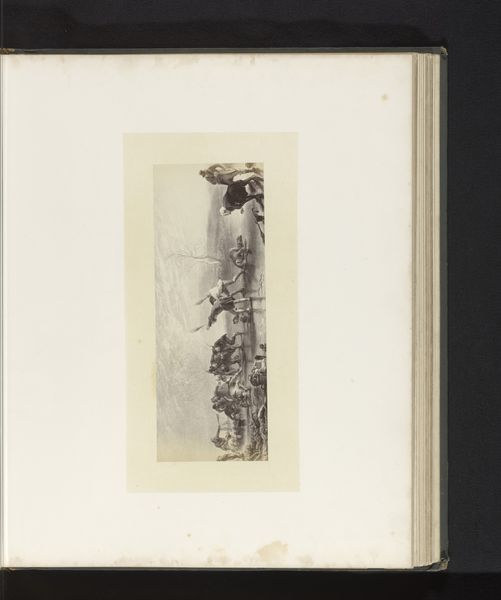
Relikwieënkast, opgesteld tijdens de Exposition Rétrospective van 1873 in Tours, Frankrijk 1873
0:00
0:00
print, metal, etching, photography, sculpture
# print
#
metal
#
etching
#
photography
#
sculpture
Dimensions: height 165 mm, width 108 mm
Copyright: Rijks Museum: Open Domain
Curator: Here we have a photographic print of a reliquary casket, displayed during the Exposition Rétrospective of 1873 in Tours, France. Gabriel Blaise documented it, likely using metal etching to transfer the photograph. Editor: It looks like a tiny, ornate cathedral built for fairies. Do you think those are angels perched around the base? Curator: They very well could be. Consider the period; during such exhibitions, objects were showcased to reinforce national pride and historical narrative. Reliquaries, especially, bridged religious devotion and artistic skill, asserting a powerful cultural legacy. Editor: That's interesting, but I keep coming back to the craftsmanship, it’s a marvel. The intricacy… the way light would filter through it in real life. It’s like a little beacon of faith, almost futuristic if you imagine it sparking and humming with secret energy. Curator: That tension between devotion and innovation is what defined the 19th-century approach to heritage. Presenting sacred objects as symbols of artistic and technical progress—a deliberate reframing, I think. Editor: Do you think the photographer felt any of that pressure or just wanted to show this gorgeous thing? It’s strange how photos can become artifacts too…ghosts of displays past. Curator: It's entirely plausible. The act of photographic documentation inherently involves selecting, framing, and presenting, aligning the photographer's vision with institutional imperatives. Editor: True, it isn't exactly neutral, is it? Okay, thinking about this relic casket...I wonder where its secrets reside now. Thanks for walking me through this photograph and how it complicates looking at the relic itself. Curator: The pleasure was all mine. By appreciating photographs of relics, we perhaps open new perspectives on institutional aims and photography’s cultural influence.
Comments
No comments
Be the first to comment and join the conversation on the ultimate creative platform.
